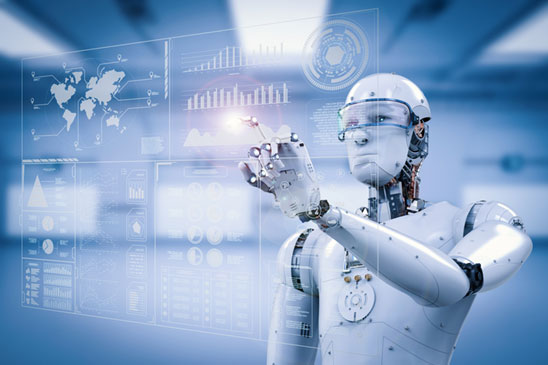When we think of robots, it often brings to mind pictures of futuristic machines with artificial intelligence and the capacity for complex movements. But this technology’s core is a simple concept: robotic arms. Robotic arm technology has been developing rapidly over recent years, and now thanks to AI assistance, they are becoming more accurate and efficient than ever before.
This article will explore how AI is helping to drive innovation in robotic arms and what kind of advances are being made in this area of robotics. Let’s look at how far robotic arms have come – you’ll be amazed by what’s possible.
Table of Contents
What Are Robotic Arms And Their Primary Functions?
Robotic arms are an incredible invention that has allowed us to automate processes and bring efficiency to many industries. A robotic arm is a portable mechanical device that can be programmed to perform operations with high precision and accuracy. They are commonly used in assembly lines, manufacturing, aerospace engineering, and medical applications, as they can carry out tasks with consistency and strength that may be too dangerous for humans or require more precision than people can give.
The versatility of robotic arms makes them suitable for welding and painting, where their rigid intrinsic movements produce consistent results without any fatigue. When the robot’s software allows it, these robotic arms can even be programmed to manipulate objects with varying degrees of force, enabling them to mimic various human-like tasks, including gripping, pushing, and pinpointing objects.
How AI Is Assisting In The Advancement Of Robotic Arms
Robotic arms have long been limited by their rigid mechanical movements and lack of control over specific parameters. However, with the advent of artificial intelligence, engineers are now able to create robots that are more flexible and adaptable than ever before. AI can be integrated into robotic arms in two main ways: Machine Learning (ML) and Deep Learning (DL).
ML algorithms can be used to analyze and identify patterns within data sets, which can then be mapped to the robotic arm’s movements. This type of AI software allows robots to learn from their mistakes and make adjustments to become more accurate. DL refers to using neural networks capable of understanding complex relationships between objects and environments. This type of AI can analyze large amounts of data, identify objects, and decide the best action to take.
AI has also been used in robotic arms to assist with motion control and precision movements. AI algorithms can be used to ensure that robots can accurately perform tasks such as welding or painting without errors or deviations.
The Benefits Of Using Robotic Arms With AI Assistance
Robotic arms with AI assistance are already revolutionizing many industries, allowing them to operate more efficiently and safely.
One of the significant benefits of using robotic arms with AI is increased productivity. By having a robot that can learn and adapt to its environment, processes can be automated to increase efficiency and accuracy in production. It saves time and reduces the risk of human error, as robots are programmed to follow a set procedure that is unlikely to make mistakes.

Another benefit is improved safety in the workplace. Robotic arms with AI can replace dangerous tasks that would otherwise put workers at risk. It allows companies to adhere to safety regulations more reliably and reduce the risk of illness and injury in the workplace.
Finally, robotic arms with AI can be used to increase accuracy and quality control. By being able to learn from their mistakes, robots can carry out tasks consistently with a high level of precision. It increases product output and can help companies save on resources by producing fewer defective products.
Applications For Robotic Arms with AI Assistance
Robotic arms with AI assistance can be used in various applications, from manufacturing to medical operations.
In the manufacturing industry, robots are already being used to automate production processes and increase efficiency. Manufacturers can produce high-quality products faster than ever by having AI-assisted robotic arms that can adapt and learn.
In the medical industry, robotic arms perform minimally invasive surgeries with unprecedented accuracy. These robots can be programmed to make fine movements and repeat them precisely, allowing surgeons to carry out complex operations with greater precision.
Robotic arms are also being used in space exploration. AI-assisted robots can explore environments too dangerous for humans, providing valuable data and insights about the environment.
Challenges Faced In The Development Of Robotic Arms With AI Assistance
Although AI-assisted robotic arms offer many benefits, some challenges still need to be addressed.
One of the significant challenges is data storage and processing. Robotic arms require a large amount of data to function effectively, which can take time to store and process quickly. Additionally, algorithms used for motion control must be able to process the data efficiently for robotic arms to act accurately and promptly.
Another challenge is programming the robot with predetermined rules that define how it should react to different scenarios. As robots are programmed with specific parameters, any changes or errors can significantly affect their performance.
